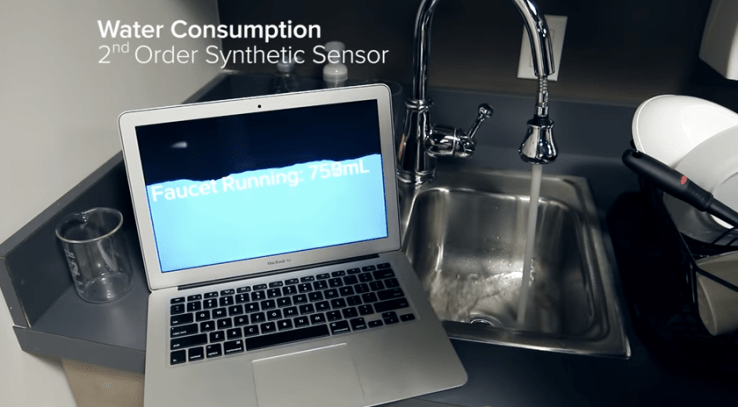
The so-called ‘smart home’ often comes across looking incredibly dumb. Either you have to shell out lots of money to replace perfectly functional appliances for their Internet-connected equivalents — which might then be vulnerable to hacking or whose functionality could be bricked at manufacturer whim.
Or you go around manually affixing sensors to each appliance and moveable fixture in your home — and end up with the equivalent of interior pebble-dashing comprised of stick-on gadgetry; a motion sensor and/or ugly-looking Dash-style button[1] on everything.
And that’s before you even consider how, in inviting this bevy of connected device makers into your home, you’re typically letting out a flow of what can be highly sensitive personal data to be sucked into the cloud for profit-seeking entities to pore over.
Researchers at CMU’s Future Interfaces Group[2] are taking a different approach to enable the sensing of indoor environments, and reckon there’s a quicker, less expensive and less cumbersome way to create what’s at least a smarter interior. And one that might have some privacy benefits too, depending on the deploying entity.
What they’ve built so far does not offer as many remote control options as a fully fledged, IoT-enabled appliance scenario could. But if it’s mostly signals intelligence on what’s going on indoors that you want — plus the ability to leverage that accrued real-time intel to support contextually aware apps for the lived environment — their approach looks very promising.
The team is presenting their research[3] at the ACM CHI Conference in Denver this week. They’ve also produced the below demo video showing their test system in action.
The system involves using a single custom plug-in sensor board that’s packed with multiple individual sensors — but, crucially from a privacy point of view, no camera. The custom sensor (shown in the diagram below) uses machine learning algorithms...
Read more from our friends at TechCrunch
Most Americans didn’t realize it, but something BIG changed in the U.S. gold market in the beginning of 2017. While precious metals sentiment and buying in the U.S. has dropped off considerably in the first quarter of 2017, the East continues to acquire gold, HAND OVER FIST.
How much gold? Well, let’s just say... U.S. gold exports have nearly doubled during JAN-FEB 2017 versus the same period last year:

Total U.S. gold exports JAN-FEB 2017 surged to 101 metric tons (mt), compared to 56.5 mt last year. This is quite interesting because total U.S. gold mine supply plus gold imports for JAN-FEB 2017 only equaled 80 mt. Thus, the U.S. suffered a 21 mt gold supply deficit in the first two months of the year. Which means, someone had to liquidate an additional 21 mt of gold from their vaults to export to the East... where they still understand the vital role of gold as REAL MONEY.
And where did the majority of U.S. gold exports head to? You got it... Hong Kong-China & India:

Of the 101 mt of U.S. gold exports JAN-FEB 2017, Hong Kong-China and India received 61.8 mt, or nearly two-thirds of the total. Switzerland received 28 mt, U.K. imported 5.6 mt and the U.A.E. acquired 3.3 mt. The remaining 2.3 mt went to various countries such as, Germany, Canada and Mexico.
What is also quite interesting, is that the majority of the year-over-year increase went to Hong Kong-China and India. U.S. gold exports to Hong Kong-China and India doubled from 31 mt during JAN-FEB 2016 to 61.8 mt JAN-FEB 2017.
What does this all mean? It means, as U.S. precious metals investors continue to BICKER,